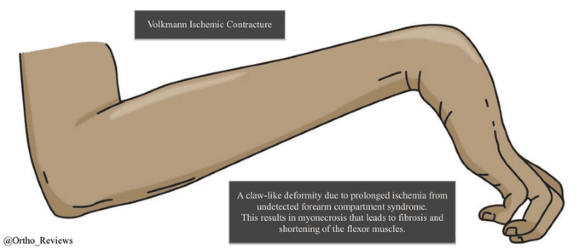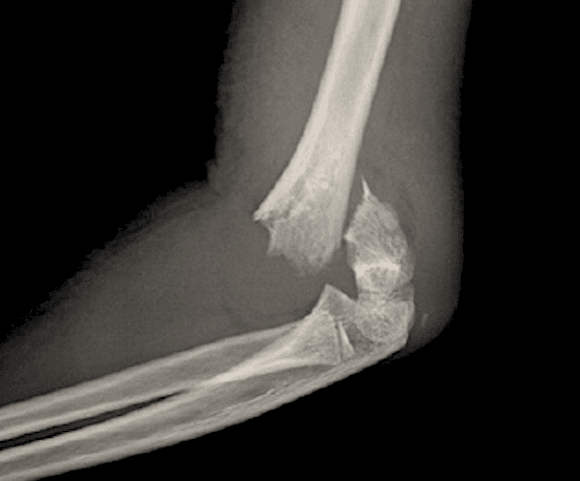
Supracondylar humerus fractures are a common pediatric fracture and most commonly occur between 5-7 years of age.
Patients will present with pain and swelling of the elbow and with severely displaced fractures patients may present with an S-shaped deformity of the arm.
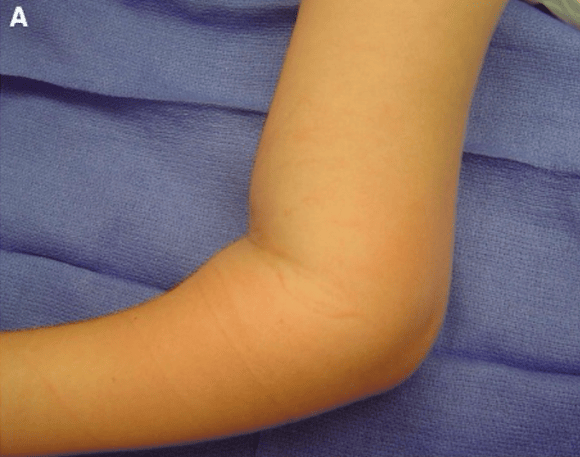
Neurovascular examination is essential because it dictates the urgency of treatment.
You should assess the patients' pulses, capillary refill, skin color, and temperature
Particular attention should be taken when assessing the AIN because it is the most commonly injured nerve
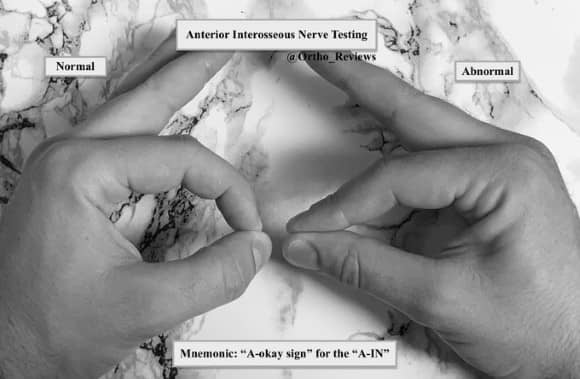
Urgency of treamtent:
Non-urgent:
✯ Neurovascularly intact
✯ Can be splinted overnight and treated next day
Urgent:
✯ Same-day surgical management
✯ Neurovascularly unstable
✯ Floating Elbow
✯ Brachialis sign
Emergent:
✯ Pusless extremity before & after reduction
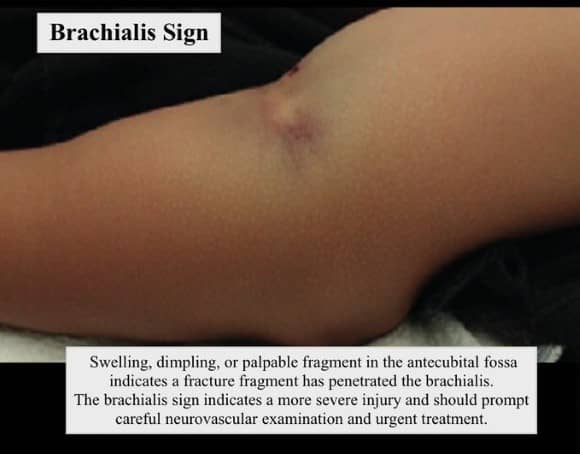
⟐ Elbow Ossification Centers ⟐
Age of appearance:
✯ Capitellum (1 yo)
✯ Radial Head (3-4 yo)
✯ Medial Epicondyle (5-6 yo)
✯ Trochlea (7-8 yo)
✯ Olecranon (9-10 yo)
✯ Lateral Epicondyle (11-12 yo)
Mnemonics:
"CRITOE" or "Come ride my tool of love"
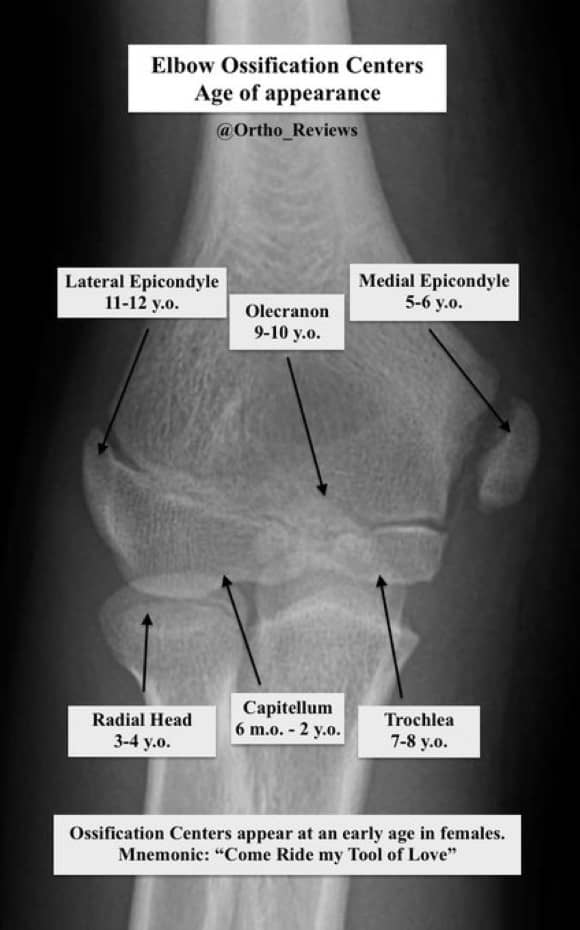
Pediatric elbow fractures may be subtle and the best way to avoid missing these injuries is by taking a systemic approach to interpreting pediatric elbow radiographs.
1) Trace the cortices of each bone for cortical disruption
2) Look for Fat Pad Signs
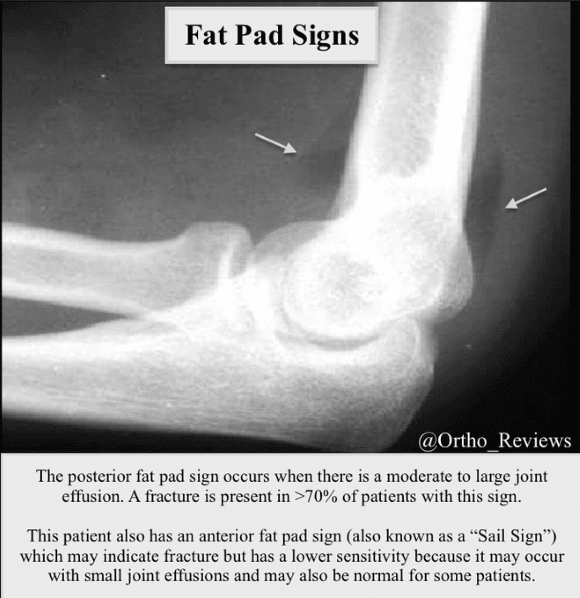
3) Check alignment of the radiocapitellar joint
The radial head should align with the capitellum in all views.
The Radiocapitellar Line may be used to assess alignment. If disrupted you should suspect radiocapitellar dislocation.
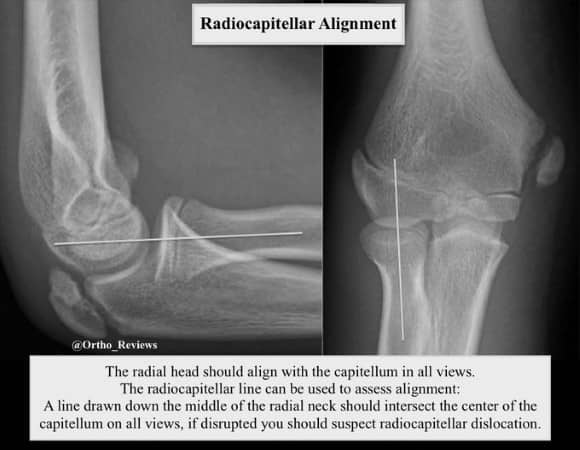
4) Anterior humeral line: a line drawn down the anterior humeral shaft should intersect the capitellum
⟐ < 5 y.o. the AHL should intersect the anterior portion of the capitellum
⟐ > 5 y.o. the AHL should intersect the middle 1/3 of the capitellum
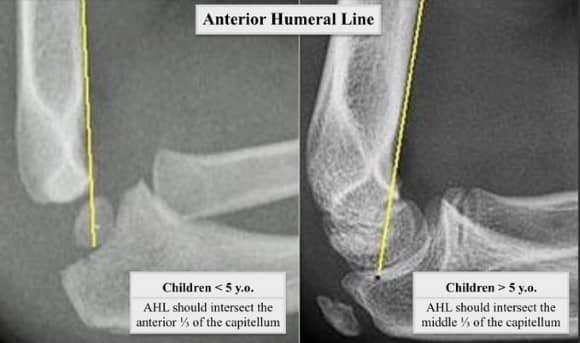
5) Baumanns angle: formed by a line down the anatomic axis of the humerus and lateral condylar physis.
Assesses coronal deformity
Normal: 70-79° (varies by resource)
Increased angle = varus angulation
Best used by comparing to the contralateral side, >5° deviation is abnormal
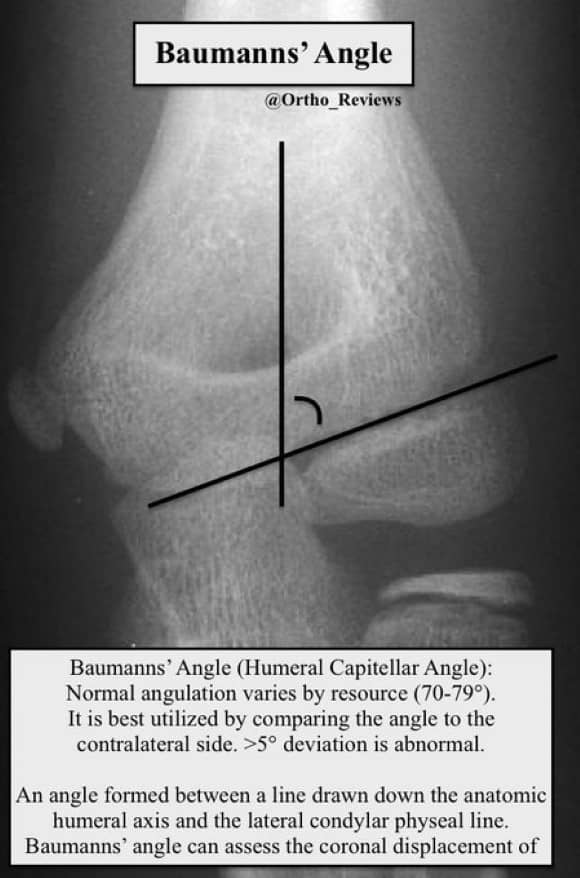
Extension-type fractures, those with posterior displacement of the distal fragment, are most common (>90%).
They are most commonly due to a fall onto an outstretched hand (FOOSH).
Flexion-type injuries may also occur and are commonly due to a fall onto the elbow.
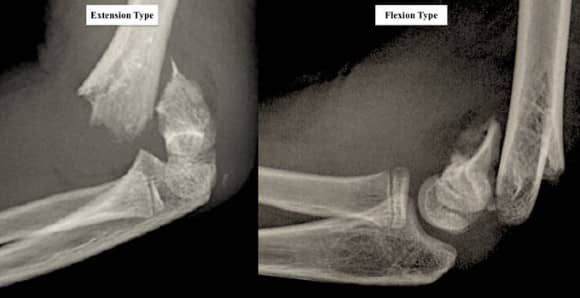
The Gartland Classification System:
⟐ Type 1:
✯ Minimally displaced
✯ Treated with casting
⟐ Type 2:
✯ Displaced only in the sagittal plane
✯ Posterior hinge intact
✯ Treated with CRPP
⟐ Type 3:
✯ Displaced in all planes
✯ Treated with CRPP or ORIF if needed
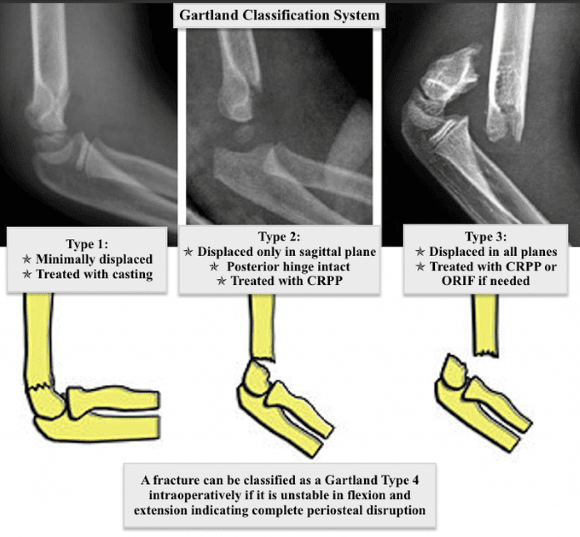
Non-operative management:
Gartland Type 1 and Type 2 with normal anterior humeral line and minimal swelling.
Treated with closed reduction and long arm casting in 60-90° flexion.
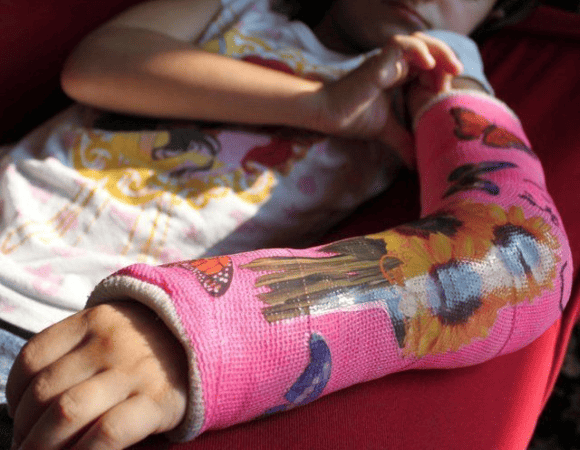
Surgical management:
✯ Displaced Type 2 and 3
✯ Displaced flexion-type
✯ Medial Comminution
✯ Neurovascular injury
✯ Open Fx
Treatment consists of closed reduction with placement of 2-3 pins
Three lateral or crossed pins may be needed for Type 3 and 4 fractures
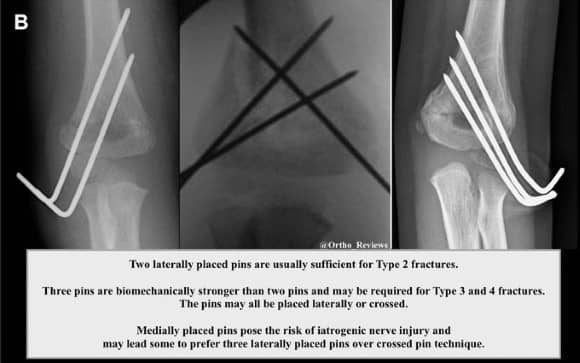
Open reduction with internal fixation with or without vascular exploration may be needed if there is neurovascular injury.
ORIF is also indicated for open fractures or if the fracture is irreducible by closed means.
Complications:
⟐ Malunion:
✯ Cubital valgus: may lead to development of ulnar nerve palsy with progression of the deformity
✯ Cubital varus (gunstock deformity) can result if medial comminution goes unrecognized
✯ Recurvatum: untreated type II and III injuries
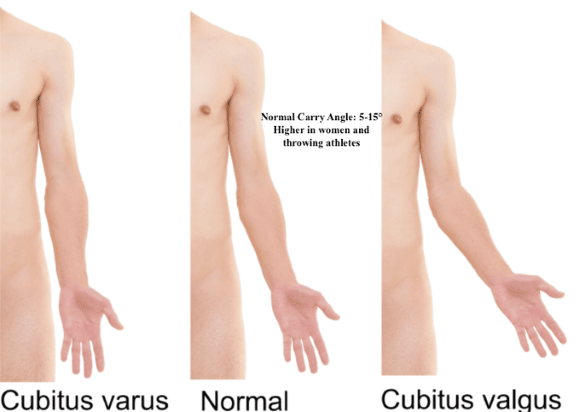
Additional Complications:
⟐ Pin migration (most common complication)
⟐ Loss of ROM (loss of full extension)
⟐ Compartment syndrome is uncommon but if unrecognized can result in a Volkmann Contracture.
